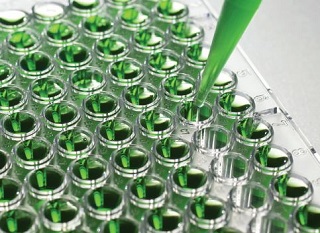Question:
What assay development accessories should be used for protein binding?
The Protein Man Says:
As mentioned in our earlier post, there are several kinds of activated plates that can help you get the results you need to complete your research. Now, since we have already covered biotin-binding plates, we will now take a closer look at some of the most commonly used protein/peptide binding plates.
 Protein/Peptide Binding Plates
Protein/Peptide Binding Plates
Plates designed for protein/peptide binding can either be coated with nickel (for binding 6X histidine tagged proteins and peptides), glutathione (for GST tagged proteins and peptides), amine (for binding primary amines of peptides and proteins) and/or sulfhydryl (for free sulfhydryls of peptides and proteins). Most of these plates are supplied as clear, white and black and can ideally be used for colorimetric, chemiluminescent and fluorescent detection methods, respectively.
-
Nickel coated plates directly isolate polyhistidine-tagged proteins and peptides while glutathione coated plates isolate glutathione S-transferase (GST) tagged proteins from bacterial lysates for ELISA-based protocols. Detergents used to lyse cells do not inhibit protein binding to activated plates as they usually do with plain polystyrene plates. In addition, these plates are ready to use and are pre-blocked to reduce non-specific binding.
-
Amine coated plates are maleic anhydride activated plates that rapidly bind primary amines of peptides and proteins to form amide bonds that are stable under neutral and basic conditions (pH≥7). Under acidic conditions, however, the bonds will be hydrolyzed releasing the peptide/ligand. Taking this into consideration, binding of peptide/ligand to plates should be performed between pH 8 to 9 and the binding assays or ELISA should be performed at pH conditions ≥7.
-
Sulfhydryl-binding plates are maleimide activated plates that react with free sulfhydryls to form stable thioether bonds between pH 6.5 and 7.5. These are ideally used in immobilizing and binding sulfhydryl-containing molecules, especially those that are difficult to coat onto polystyrene plates (e.g. protein molecules with free sulfhydryl group and peptides that contain a terminal cysteine). Both amine-binding and sulfhydryl-binding plates are pre-blocked to reduce non-specific binding.
We still haven't covered antibody-binding plates so keep watching this space for more information on this topic.






